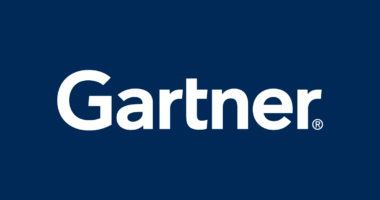The appraisal process is evolving due to technological advancements, changes in working behaviour, and shifts in employer and employee expectations. Appraisers are placing greater emphasis on accuracy and reliability, and there is an increased demand for specialized appraisers. Additionally, the process is being influenced by the growing focus on transparency and accountability. The inclusion of diverse appraisers, participation from all stakeholders, and education and resources can make the process more inclusive. The use of technology can streamline the process and improve accuracy, while the use of data analytics can help to identify trends and patterns. Appraisers should stay up-to-date with industry trends and changes in regulations to ensure that they are able to provide accurate appraisals. Ultimately, creating a more inclusive and transparent appraisal process benefits everyone involved.
How to Make the Appraisal Process More Inclusive
It is that time of the year again, and the appraisal process is underway. As the appraisal process continues to gain momentum, it is essential to consider making it more inclusive.
Here are some general factors that can influence appraisal time expectations:
Frequency of appraisals
The frequency of appraisals can impact the time expectations from the workforce. If appraisals are conducted annually, employees may expect a more in-depth and time-consuming process than if they are conducted bi-annually or quarterly.
Type of appraisal
The type of appraisal can also impact time expectations. For example, a 360-degree appraisal, which involves feedback from multiple sources, may take longer to conduct than a traditional performance appraisal.
Size of the organization
The size of the organization can impact appraisal time expectations. Larger organizations may require a more structured and time-consuming process, while smaller organizations may be able to conduct appraisals more efficiently.
Use of technology
The use of technology can help to streamline the appraisal process, reducing the time required. For example, digital tools can be used to collect and analyze data, while virtual meetings can be used to conduct appraisals remotely.
Preparation required
The preparation required for an appraisal can impact the time expectations from the workforce. Employees may be required to gather and present documentation or complete self-evaluations, which can take time.
Clarity of expectations
Clear communication and expectations regarding the appraisal process can help to manage time expectations from the workforce. If employees are aware of the appraisal process and timeline, they may be more understanding of the time required.
In general, the appraisal process should be conducted efficiently while ensuring that adequate time is given to provide accurate and thoughtful feedback. This can help to ensure that employees feel valued, and the organization is committed to their growth and development.
The latest appraisal trends across sectors and industries include remote appraisals, which have become increasingly popular since the pandemic. Technology such as video conferencing and digital tools can be used to conduct appraisals remotely, making the process more efficient and inclusive.
By considering the above factors, organizations can make the appraisal process more inclusive, efficient, and effective. Ultimately, this can help to create a more positive work environment where employees feel valued, appreciated, and supported in their personal and professional growth.
Evolving Trends in the Appraisal Process
The appraisal process is undergoing significant transformation due to technological advancements, changes in working behaviour, and shifts in employer and employee expectations. Here are some ways in which the appraisal process is evolving:
Digitization
The appraisal process is becoming increasingly digitized, with the use of technology to collect and analyze data. Automated evaluation models (AEMs) are being used to generate objective findings and results, keeping all stakeholders engaged.
Remote appraisals
Remote appraisals using technology such as video conferencing and digital tools to collect and analyze data have become more prevalent since the pandemic. This trend is likely to continue in the future.
Artificial intelligence and machine learning
The use of artificial intelligence and machine learning in the appraisal industry is on the rise, with tools being developed to automate various aspects of the appraisal process, such as data collection and analysis.
Increased focus on accuracy and reliability
Appraisers are increasingly emphasizing the importance of accurate and reliable appraisals, with a focus on reducing errors and ensuring that appraisals are based on reliable data.
Specialization
As various industries become more complex, there is a growing demand for appraisers with specialized knowledge and expertise in different areas. This trend is likely to continue in the future.
Transparency and accountability
There is a growing emphasis on transparency and accountability in the appraisal process. Appraisers are ironing out potential conflicts and providing detailed explanations of their process methodology and findings.
Changes in working environment
The appraisal process is also being affected by changes in the working environment, with new policies and expectations being introduced to ensure that appraisals are accurate, reliable, and transparent.
By focusing on these trends, appraisers can help to ensure that the appraisal process is more accurate, efficient, and effective. This, in turn, can help to create a more positive work environment where employees feel valued, appreciated, and supported in their personal and professional growth.
It is essential to note that the appraisal process is not only about evaluating an employee’s performance but also about setting goals and identifying areas for growth and development. Therefore, it is essential to ensure that the appraisal process is conducted efficiently and effectively, providing employees with valuable feedback that can help them grow and succeed in their roles.
In conclusion, the appraisal process is continuously evolving due to technological advancements, changes in working behaviour, and shifts in employer and employee expectations. By staying on top of these trends, appraisers can help to ensure that the process is accurate, efficient, and effective, ultimately benefiting both employees and organizations.
Making the Appraisal Process More Inclusive
The appraisal process can be made more inclusive by addressing systemic biases and ensuring that all stakeholders are represented and heard. Here are some ways in which this can be achieved:
Diversifying the appraiser pool
Encouraging and supporting a more diverse group of individuals to enter the appraisal profession can help to address implicit biases and a lack of cultural competence.
Addressing systemic biases
Appraisal processes and methodologies can be reevaluated to identify and address any inherent biases. This can involve examining the factors used to determine employee value and ensuring that they are fair and equitable.
Encouraging stakeholder participation
Encouraging participation from a diverse range of stakeholders can help to ensure that the appraisal process takes into account the needs and perspectives of all parties involved.
Providing education and resources
Providing education and resources to stakeholders, including employees and appraisers, can help to ensure that all parties have access to the information and tools needed to make informed decisions.
Using technology
The use of technology, such as automated valuation models and online platforms, can help to increase transparency and reduce the potential for bias in the appraisal process.
Encouraging feedback and review
Encouraging feedback and review from stakeholders can help to ensure that the appraisal process is fair, accurate, and inclusive. This can involve soliciting feedback on the appraisal process and providing opportunities for stakeholders to review and challenge appraisal results.
By implementing these strategies, the appraisal process can become more inclusive and ensure that all stakeholders are heard, leading to a fairer and more equitable process for everyone involved.
The New-Age Appraisal Process
The appraisal process is undergoing transformation and evolving to new forms and formats owing to various factors. Here are some tips for a new-age appraisal process:
Embrace technology
The use of technology can streamline the appraisal process and improve accuracy. Automated evaluation models (AEMs) and digital tools can be used to collect and analyze data, while virtual reality can be used to provide an immersive experience.
Utilize data analytics
The use of data analytics can help to identify trends and patterns, allowing for more accurate appraisal results. Machine learning algorithms can be used to predict trends based on a range of data points.
Specialize
Appraisers can differentiate themselves by specializing in a particular area of expertise. This can help to increase the value of their services and ensure that they are able to provide accurate appraisals in their area of expertise.
By embracing these strategies, organizations can create a new-age appraisal process that is efficient, effective, and objective, ultimately benefiting both employees and employers. The new-age appraisal process ensures that all stakeholders are considered, leading to a more inclusive process that promotes growth and development.
To ensure a fair and effective appraisal process, appraisers should be transparent and accountable in their methodology and findings, consider the perspectives of all stakeholders involved, and stay up-to-date with industry trends and regulations. Encouraging stakeholder participation and providing education and resources can also help to make the appraisal process more inclusive. Let’s work together to create a more inclusive and transparent appraisal process for everyone involved. Follow us on Twitter, Facebook, and LinkedIn for more updates.
Don’t miss interesting posts on Famousbio









